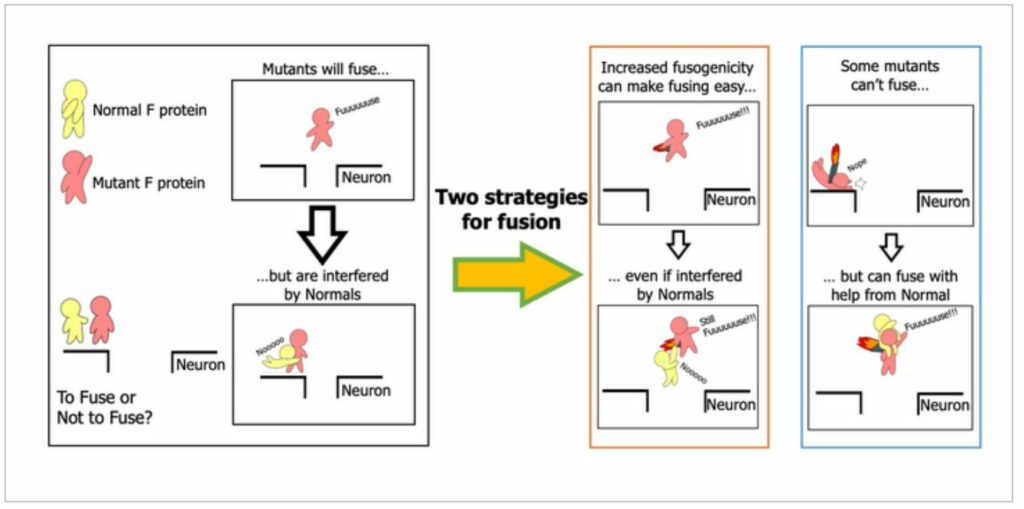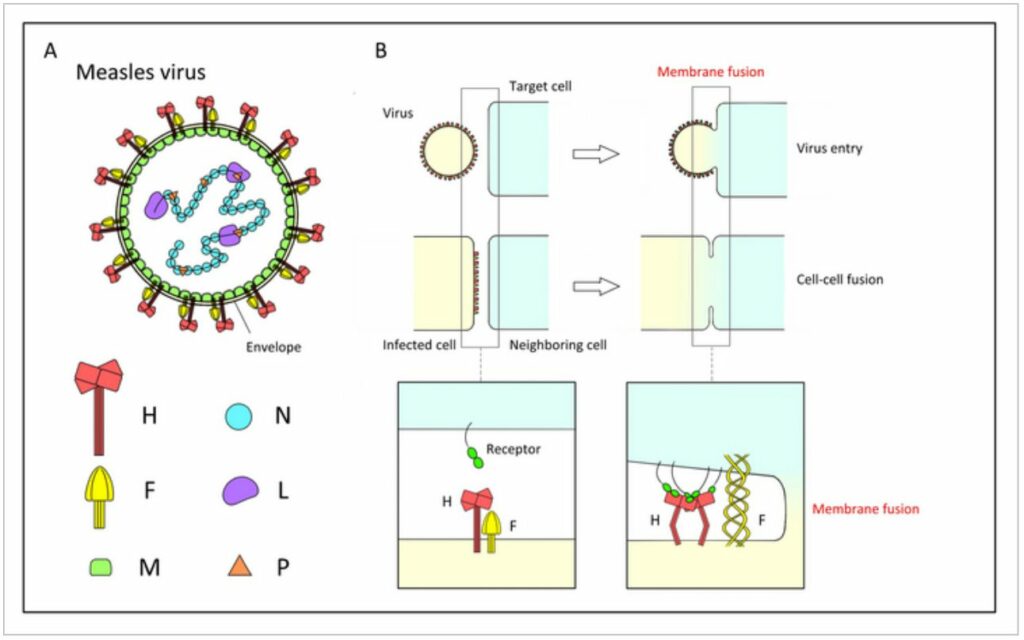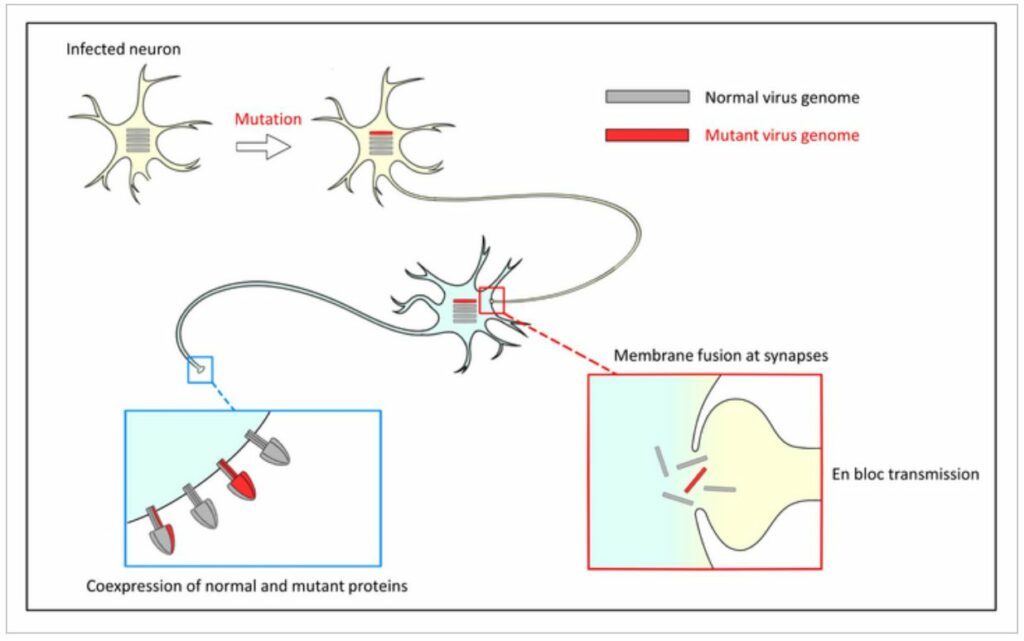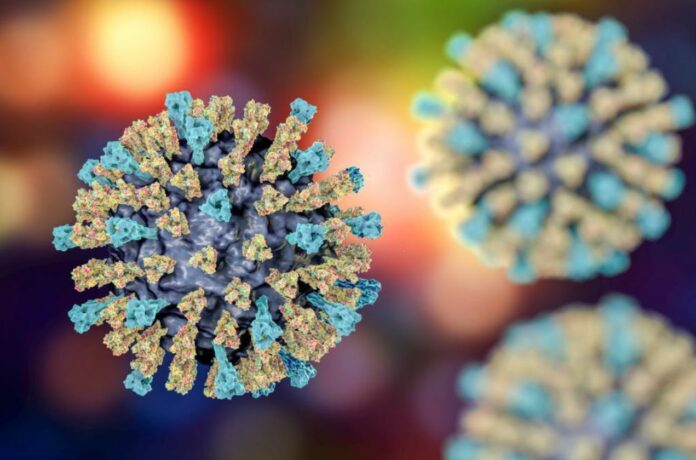Japanese researchers have discovered the mechanism by which the measles virus can lead to subacute sclerosing panencephalitis (SSPE), a fatal neurological disorder that can occur several years after a measles infection.
While the measles virus in its natural form is unable to infect the nervous system, the research team discovered that viruses that survive in the body may acquire mutations in a crucial protein that regulates how they infect cells. Its normal form may interact with the altered proteins, giving it the ability to infect the brain. Their research was published in the journal Science Advances.
Depending on your age, you may have contracted measles as a kid. Since the widespread use of immunizations began in the 1970s, many people born since then have avoided contracting the disease. The disease is caused by the same-named virus, which is still one of the most contagious diseases. The World Health Organization projects that almost nine million individuals were infected with measles globally in 2021, with 128,000 deaths.
“Despite its availability, the recent COVID-19 pandemic has set back vaccinations, especially in the Global South,” points out Yuta Shirogane, Assistant Professor at Kyushu University’s Faculty of Medical Sciences. “SSPE is a rare but fatal condition caused by the measles virus. However, the normal measles virus does not have the ability to propagate in the brain, and thus it is unclear how it causes encephalitis.”
Viruses infect cells through surface proteins. Usually, a surface protein helps a virus connect to a cell before another surface protein triggers a response that allows the virus into the cell, causing an infection. So, the type of cell has a lot to do with what a virus can or can’t infect.
“Usually, the measles virus only infects your immune and epithelial cells, causing the fever and rash,” adds Shirogane. “Therefore, in patients with SSPE, the measles virus must have remained in their body and mutated, then gained the ability to infect nerve cells. RNA viruses like measles mutate and evolve at very high rates, but the mechanism of how it evolved to infect neurons has been a mystery.”
A protein known as a fusion protein, sometimes known as F protein, is an essential component in the process that enables the measles virus to enter a cell. In the team’s earlier research, they found that certain mutations in the F protein put it in a state called “hyperfusongenic,” which lets it attach to neural synapses and infect the brain.
In the new study, the team looked at the genome of the measles virus in SSPE patients and found that their F protein had a lot of mutations. It is interesting to note that certain mutations increased infection activity while others lowered it.

“This was surprising to see, but we found an explanation. When the virus infects a neuron, it infects it through ‘en bloc transmission,’ where multiple copies of the viral genome enter the cell,” remarks Shirogane. “In this case, the genome encoding the mutant F protein is transmitted simultaneously with the genome of the normal F protein, and both proteins are likely to coexist in the infected cell.”
In order to test this theory, the group examined the fusion activity of mutant F proteins in the presence of wild-type F proteins. Their findings demonstrated that interference from the normal F proteins suppresses the fusion activity of a mutant F protein, but that interference is overcome by the accumulation of mutations in the F protein.

In a separate investigation, the group discovered that one particular collection of mutations in the F protein brings about the entire opposite effect, namely a decrease in the amount of fusion activity. But they were surprised to find that this mutation can work with normal F proteins to boost fusion activity. Therefore, even mutant F proteins that do not seem to be able to infect neurons are nonetheless capable of infecting other parts of the brain.

“It is almost counter to the ‘survival of the fittest’ model for viral propagation. In fact, this phenomenon where mutations interfere and/or cooperate with each other is called ‘Sociovirology.’ It’s still a new concept, but viruses have been observed to interact with each other like a group. It’s an exciting prospect,” says Shirogane.
The team hopes that their findings will help develop treatments for SSPE and explain how viruses like novel coronaviruses and herpesviruses, which spread in ways similar to measles, have changed over time.
“There are many mysteries in the mechanisms by which viruses cause diseases. Since I was a medical student, I was interested in how the measles virus caused SSPE. I am happy that we were able to elucidate the mechanism of this disease,” adds Shirogane.
Source: 10.1126/sciadv.adf3731
Image Credit: Getty
